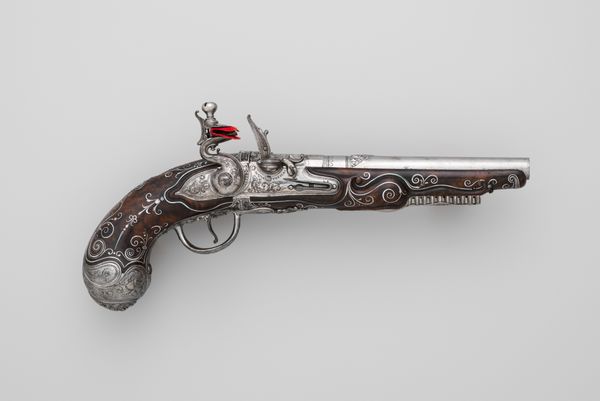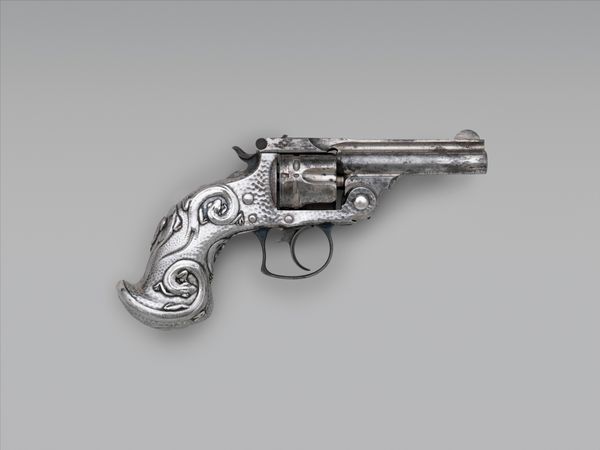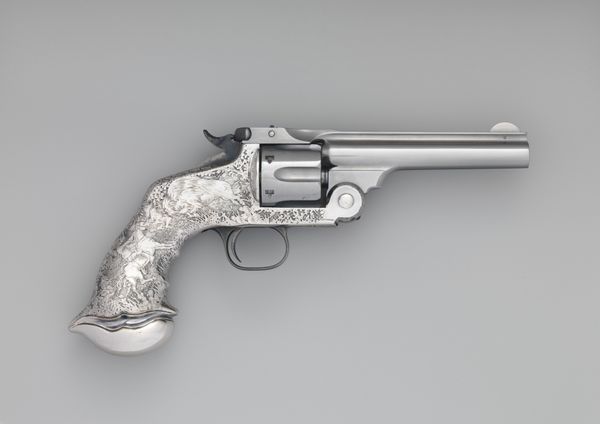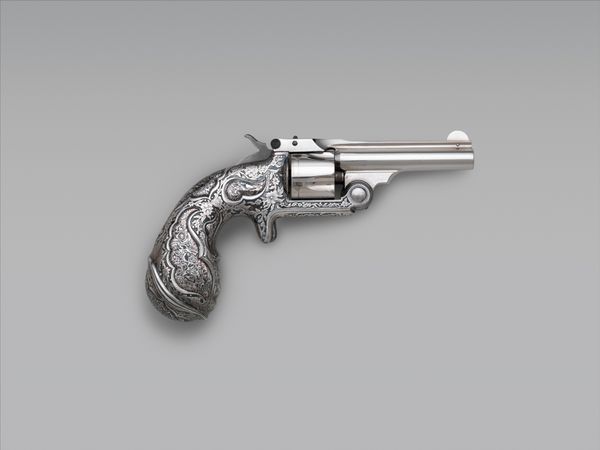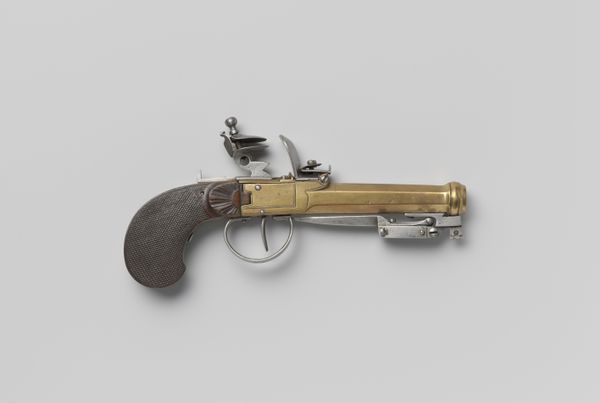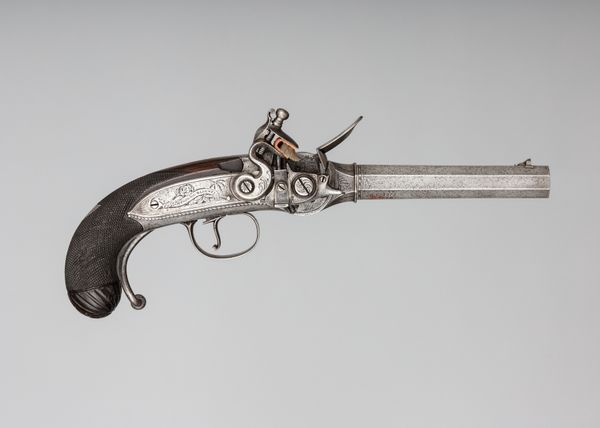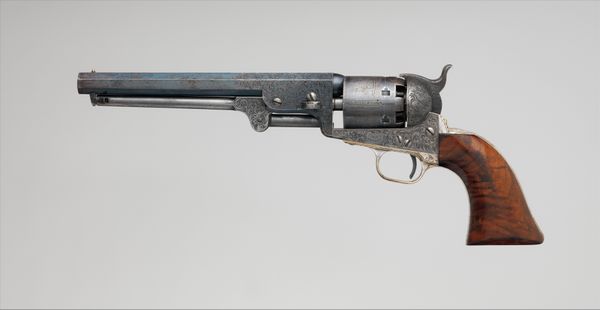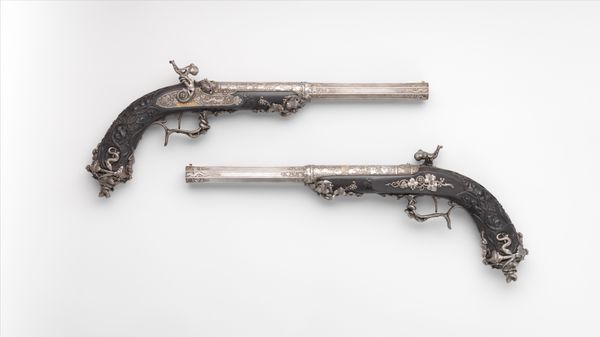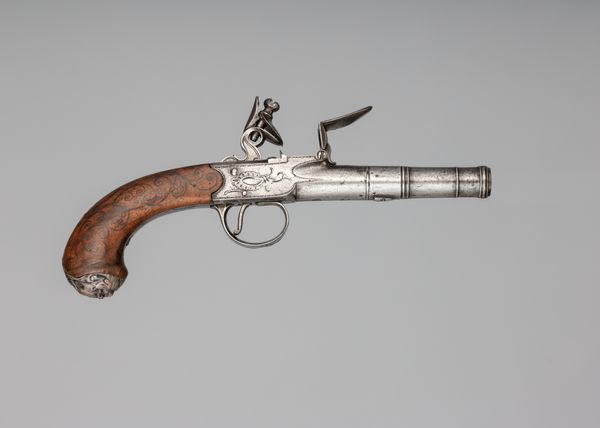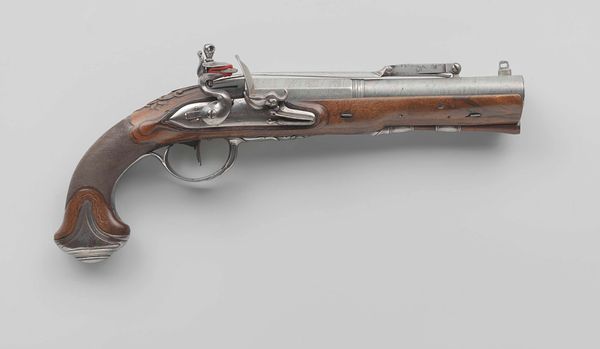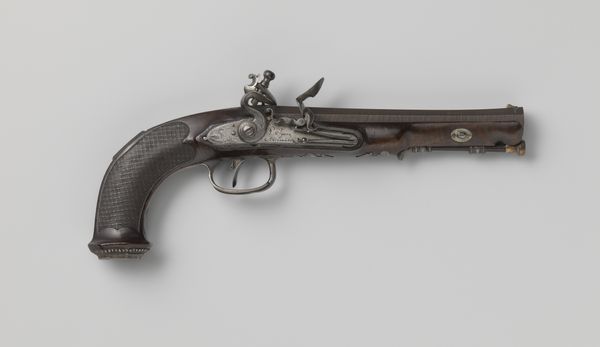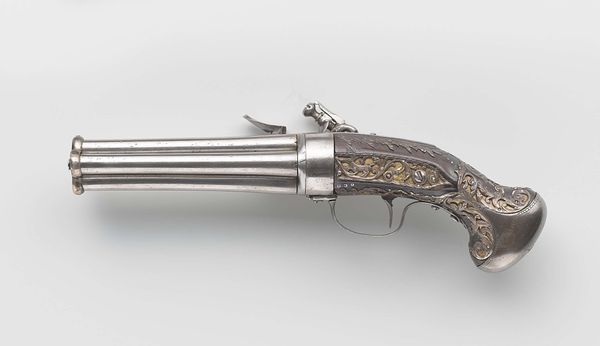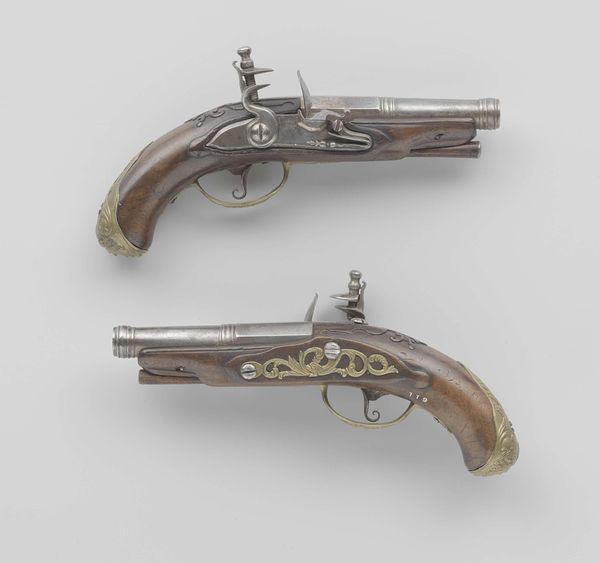
Smith and Wesson .32 Caliber Single-Action Revolver, serial no. 94421 1892 - 1893
0:00
0:00
metal, photography
#
portrait
#
still-life-photography
#
metal
#
photography
#
united-states
#
armor
Dimensions: L. 7 3/8 in. (18.7 cm); L. of barrel 3 1/2 in. (8.9 cm); Cal. .32 in. (8.1 mm); Wt. 15 oz. (424 g)
Copyright: Public Domain
Curator: Here we see a striking still-life photograph, dating from 1892 to 1893, of a Smith & Wesson .32 Caliber Single-Action Revolver, serial no. 94421. It’s part of the collection at the Metropolitan Museum of Art. Editor: Well, right off the bat, what's striking me is how...ornate it is? Almost dainty. You wouldn't think that something with such a violent purpose would be covered in all those flourishes. It's unsettling, like a wolf in sheep's clothing. Curator: Indeed. The surface decoration performs a vital function. The detailed engravings across the metal articulate power through opulence and control. It uses semiotic codes of high art to convey prestige, despite its overt purpose. Editor: Prestige is certainly one way to put it! For me, it clashes, though. It feels like an attempt to pretty up something inherently...ugly, almost? It doesn’t sit right, it makes me question the intention, you know? Was it some kind of sick joke or statement? Curator: Perhaps not. If we consider the socio-political context, in the late 19th century, weapons weren’t just tools but status symbols. Embellishing them blurred the lines between utility and artistry, speaking to a societal acceptance – even glamorization – of their presence. The swirling designs on the handle juxtapose with the object's severe functionality. Editor: It's still pretty jarring. There's something so visually jarring about adorning a deadly tool with what basically amounts to floral wallpaper. It does sort of highlight the tension of that era, that strange mix of elegance and casual violence. The kind that spawns duels. Curator: A compelling contradiction indeed. But now looking again at this piece it feels less contradictory and more like the formal features are arranged around an explicit paradox! Editor: Well, putting all my discomfort aside, you’ve gotta give it to the craftsmanship. The engraver had skill, whether I like the purpose or not. I keep wondering, who owned it, what stories did it silently witness? That’s the bit that sticks with me, stories. Curator: That’s an excellent perspective that bridges the aesthetics of the image and its history.
Comments
No comments
Be the first to comment and join the conversation on the ultimate creative platform.
